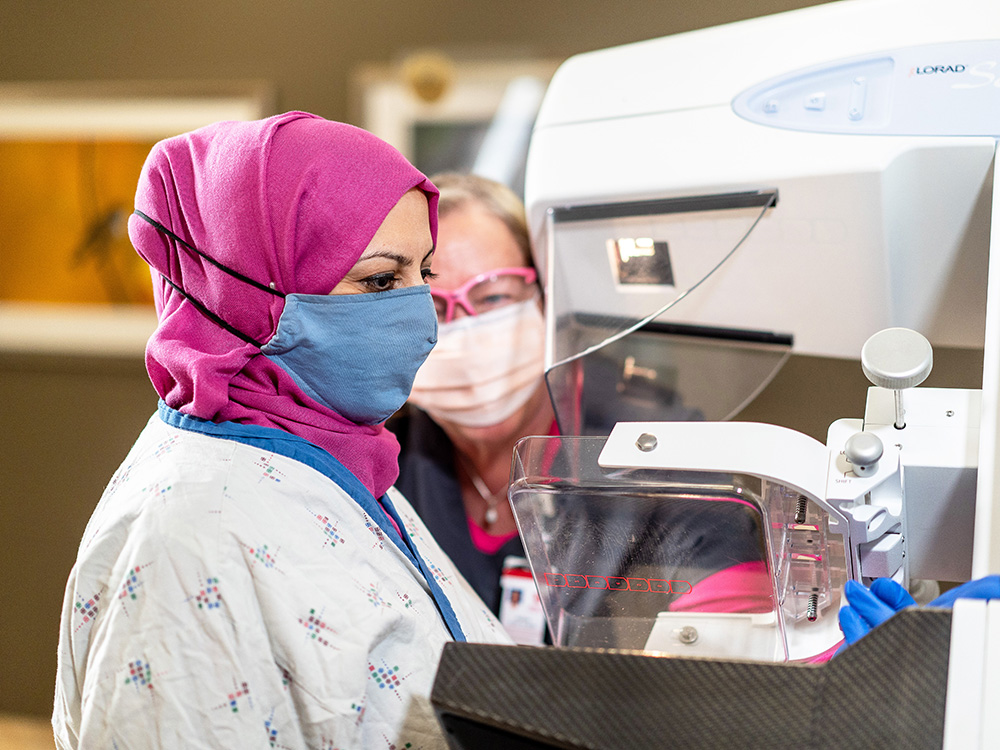
Breast cancer is one of the most common types of cancers diagnosed in women. Approximately 1 in 8 women will receive a breast cancer diagnosis in their lifetime, according to the American Cancer Society. Huntsman Cancer Institute (HCI) and University of Utah Health (U of U Health) recommend all women receive an annual mammogram beginning at age 40.
A mammogram is a type of x-ray that takes pictures of breast tissue. This screening allows doctors to find breast cancer early, when it is easier to treat, and also diagnose other potential noncancerous health conditions.
Yet some women delay or avoid getting a mammogram. In fact, Utah consistently ranks low for the number of eligible women who receive annual mammograms.
"Utah is unfortunately one of the states with the lowest breast cancer screening rates in the country," says Phoebe Freer, MD, chief of the breast imaging section in the Department of Radiology and Imaging Sciences at HCI and associate professor of radiology and imaging sciences at the University of Utah. "We know that screening mammography is the best tool we have to detect breast cancer and save lives. The death rate falls by about 50% in women who get screened regularly."
Many women may put off their mammograms due to fear or anxiety about the procedure, including concerns it will be uncomfortable.
"The unknown is scary," says Ashley Blair, mammography technologist at HCI. Mammography technologists have special training in the use of breast imaging equipment. "We do our best to thoroughly explain the procedure to patients before we start, and we offer space for them to ask questions."
When getting a mammogram at HCI, the patient first goes to a dressing room, where they change into a gown that opens in the front. The mammography technologist then escorts them to a private mammography room. The technologist positions the patient in the machine and takes a total of four images, two for each breast.
"The compression paddle touches the breasts to ensure the right pictures are captured," says Blair. "The patient is asked to stay still while the technologist takes the pictures. Some women report minor discomfort that lasts a few seconds."
All HCI and U of U Health mammography machines offer tomosynthesis—a state-of-the-art technology that produces 3D images of the entire breast. This helps the radiologist better distinguish abnormal tissue from normal tissue.
Radiologists who are specially trained in breast health review the mammography images. Patients receive results within 24 hours, generally on the same day.
Freer says HCI is committed to increasing access for screening, early detection, and diagnosis of breast cancer for all women in the community. "Our efforts include extending our reach beyond clinical locations through HCI’s Cancer Screening and Education Bus. We also partner with community organizations and local health departments to create access for those in rural communities and for those are uninsured or underinsured," she says.
Blair adds, "I know that a mammogram can seem a bit awkward, but it’s the absolute best tool we have to detect breast cancer. It could save your life. At the end of the day, that’s our commitment: to prevent and detect breast cancer before it spreads."
If it is time for you to receive your annual mammogram or other health and cancer screenings, make an appointment today. Learn more about the five health screenings women should receive regularly.